The Evolution of the Escapement and recent innovations
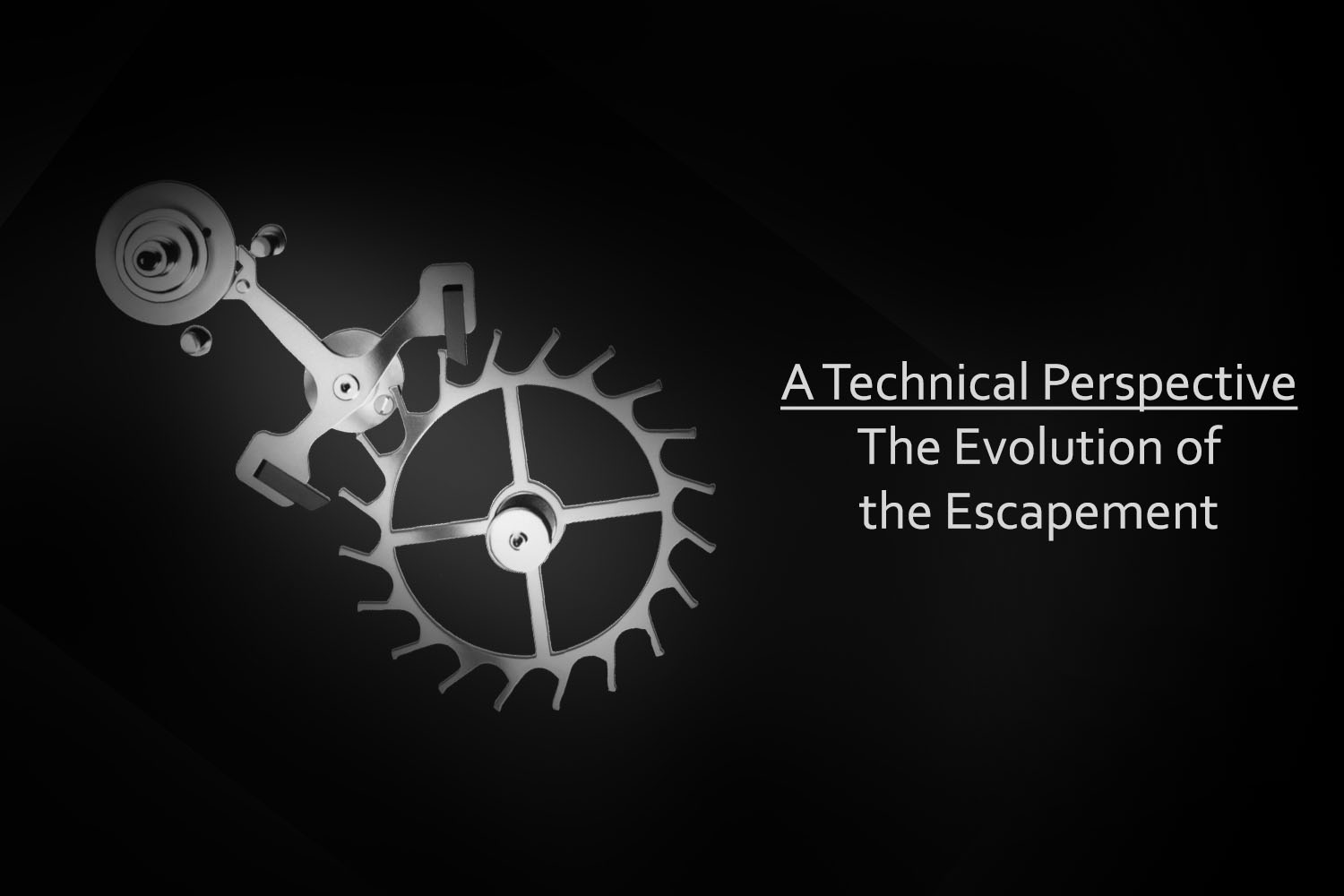
250 years after Thomas Mudge invented the first lever escapement, developing escapements has once again become the new frontier in technological breakthroughs of old-fashioned mechanical watches; a crowning glory for the most innovative, skilful and daring watchmakers. Here’s a review of recent prospects and advances concerning what is certainly the most important part of a watch, the escapement.
With this article dedicated to the escapement, we’re introducing to you a new column, entirely dedicated to technics: “A Technical Perspective”. We learnt from recent talks with you, our readers, that you are interested in learning more about movement parts, about innovation and about the way some complications work. Today, we’ll clarify the evolution of a crucial part of a mechanical watch, the escapement.
Invented by the English Horologist Thomas Mudge in the middle of the 18th century, the Swiss lever escapement is currently used in almost all of the mechanical watches we have today. Yet, after years without any innovations and in its drive for vertical integration, the Swiss watch industry has entered into one of the most intense periods for the invention of new types of escapements. All the more as the use of latest technologies, in particular the arrival of silicon, offers promising perspectives.
Classic Swiss lever escapement
The escapement is one of the most critical parts of a watch, the brain of the movement per say, or heart as some might say. It is the device which commands at what speed energy from the main spring barrel is released. It works in conjunction with the oscillator, giving impulses to power it. In return, it is regulated by the oscillator. Its role is critical in the ongoing search for the perfect precision, stability and durability of a movement.
In the effort to improve the performance of the watches, silicon holds a number of properties that make it an almost ideal material. It is light, non-magnetic, flexible and it also requires virtually no lubrication. In addition, the capacity to manufacture complex parts with extreme precision allows innovation in the shape.
As far as the escapement is concerned, silicon is currently used to improve the age old Swiss lever system. Such is the approach adopted by manufacturing giants like Rolex, Patek Philippe and the Swatch Group who financed common research projects at CSEM (Centre Suisse d’Electronique et Microtechnique) to develop silicon balance springs. As a result of such research, the principles of Patek Philippe’s Pulsomax are similar to that of the Swiss lever escapement but their use of silicon allows optimized geometry for the lever and the escape wheel, which in return improves performance, reliability and regulation significantly. In a similar spirit, Breguet, with the Classique Chronométrie 7727 (winner of the 2014 GPHG) has managed to reach the frequency of 72’000 vibrations per hour compared to the traditional 18’000 to 28’800 for more conventional movements.
Patek Philippe Pulsomax Escapement
Watchmakers not content with the swiss lever escapement decided to explore different paths. One of them was another English horologist; watchmaker extraordinaire George Daniels was one of the first, in recent times, to design a brand new system. His co-axial escapement presented in the 1970’s aimed at avoiding the need to use lubricants as this alters the functioning of the watch as oil thickens over time. Its three-pallet anchor, three level co-axial escapement wheel and balance roller with a pallet and impulse pin work in harmony to transmit the energy with lateral impulses. In contrast, the Swiss lever involves sliding movements (escapement wheel tooth along the pallet) making optimal lubrication crucial – see it in action here. The co-axial escapement is still to this day the only escapement other than the Swiss lever produced on an industrial scale, reflecting Omega’s manufacturing capabilities to innovate through a large range of coaxial calibers now fitted with silicon balance springs.
Omega Co-Axial Escapement, Based on George Daniels’ concept
Ulysses Nardin can also claim a unique place among new pioneers of escapement developing with its Dual Direct Escapement (direct impulse), presented in 2000, followed by the Dual Ulysse Escapement (indirect impulse) housed in the amazing Freak. Originally developed by Ludwig Oechslin, its objective was to improve reliability through an ingenious, simple, symmetrical architecture. It features not one but two escapement wheels with a triangular shaped lever that locks the two wheels alternatively and transmits force to the balance wheel.
Ulysse Nardin FreakLab with Dual Ulysses Escapement
A few years later, Audemars Piguet presented an interesting concept based on the eighteenth century Robin escapement. The Audemars Piguet Escapement is a direct impulse construction: which means the escape wheel transmits an impulse directly to the balance wheel while it is unlocked /locked by the anchor. This cuts the loss of energy and eliminates the need for lubrication. Audemars Piguet also increased the frequency to 6Hz (43.200 vib./hour) to offer greater precision.

The Audemars Piguet Escapement
Taking their inspiration from past masters are, Urban Jurgensen or Claret when they introduced modern versions of the detent escapement featuring devices to overcome the problem of shocks of this grail of chronometry so that it would fit into a modern wristwatch. Independent watchmakers FP Journe (with the Chronometre Optimum), Voutilainen or Laurent Ferrier (with the Micro-Rotor movement) presented variations of the échappement naturel by Louis Abraham Breguet.
Flexible Parts
Among the new breed of escapements, the use of silicon based on the flexible mechanisms principle offers some of the most significant opportunities which exploit the elasticity of flat springs.
Girard-Perregaux with its Constant Escapement has designed a solution to the century-old quest for watchmakers, an answer to the waning power in mechanical watches. Invented by Nicolas Déhon when he worked for Rolex, the project was made possible by the arrival of silicon years later when Gino Macaluso decided to take a chance on the concept which subsequently gave birth to the first constant force escapement, both technically revolutionary and aesthetically impressive. The escapement features a 14-micron silicon buckled-blade (meaning curved under tension) which acts like an energy storage unit delivering constant impulses to the oscillator, which relates to a constant precision and precision.
Girard Perregaux Constant Escapement
In 2014, using the same potentialities offered by silicon blades, Ulysse Nardin dropped another piece of avant-garde mechanical technology with its Ulysse Anchor Escapement. It features a silicon frame in which the pallet arms are suspended by buckled blades. The impulse given at each semi-oscillation transmits its energy alternatively to the blades which snap from one position to the other. The pallet arms, without pallet staff, pivot side to side free from friction. Better still, while flipping back to its original position the blade gives back its stored energy.
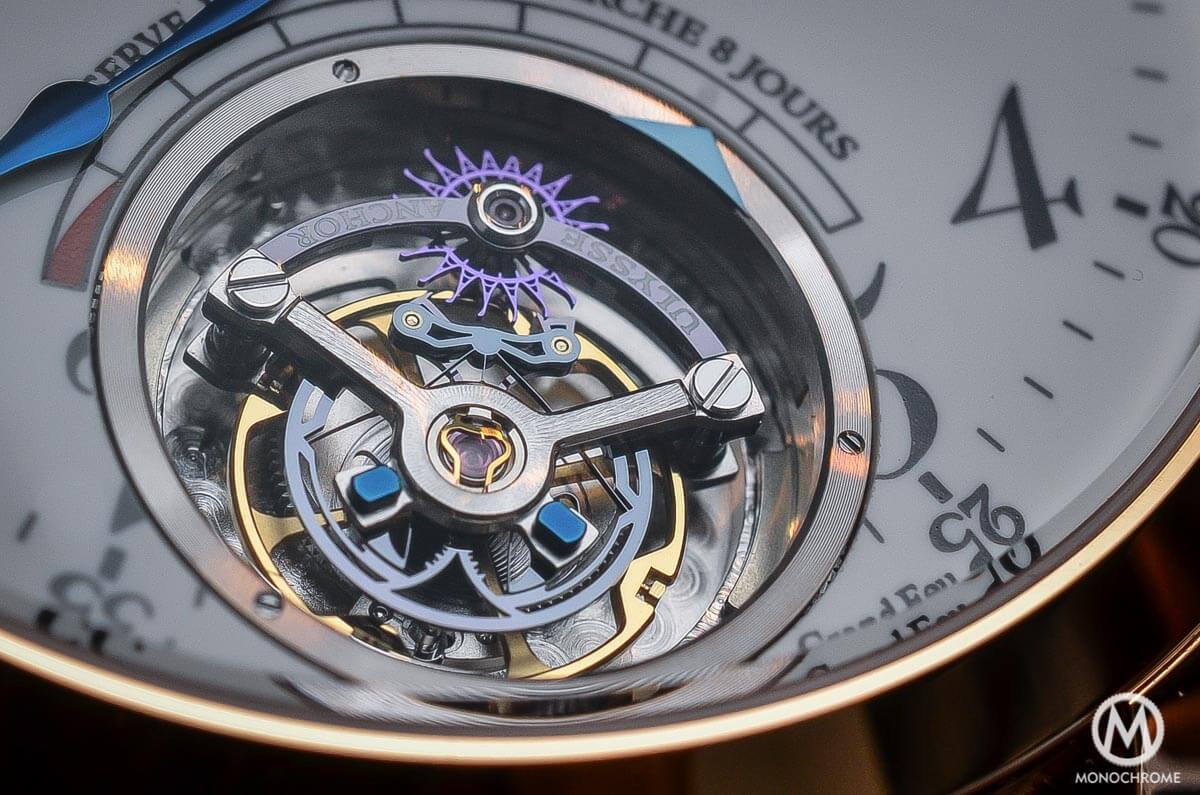
Ulysse Nardin Anchor Tourbillon
The amazing Genequand escapement is also based on the properties of using silicon flat springs, housed in the Parmigiani Fleurier Senfine concept watch, with some strong similarities to the John Harrison grasshopper escapement, this technical feat uses elastic components to replace the traditional pallets to lock/unlock the escapement wheel. Pierre Genequand, a physicist at CSEM, designed a new type of mechanical regulator which uses flexible structures to drastically reduce the energy consumption. The lubrication free device needs much lower amplitude in the oscillation of the balance wheel: 16° only. This makes it possible to use much high frequencies (16 Hz.) hence enhanced precision while offering an amazing and very long power reserve: quoted at 45 but probably more than 70 days in practice. Unlike the Girard-Perregaux and Ulysse Nardin escapements, it is associated with an unconventional oscillator, a balance wheel without balance staff and ‘spiral’ spring with suspended flexible silicon blades; Another reason for low energy consumption.
Parmigiani Fleurier Sentine with Genequand escapement
Beyond the Spiral Spring
The multi-discipline expertise of some watchmakers have allowed to open new chapters in fundamental research into the field of chronometry. In particular, the potential to design and build new oscillators, and as a consequence of these new designs the working principles of the escapement are also explored.
Tag Heuer being Tag Heuer, their research was predominantly focused on developing ultra-precise high-speed chronographs to measure very short elapsed time intervals. In 2010 the brand introduced a concept watch, called the Carrera Pendulum, featuring the first escapement to work with magnetic regulation instead of the traditional hairspring, driving the balance wheel at low amplitude and high frequency (50 Hz.). In 2011, Tag Heuer released the Mikrogirder which featured a coupling blade and excitatory blade system working with a linear oscillator (versus a spiral shape in a classical hairspring) that vibrates isochronously at a very small angle. Unaffected by gravity, the system frequency has been pushed to an astonishing 1’000 Hz!
TAG Heuer Mikrogirder Escapement
Late in 2011, De Bethune announced its research into developing its Résonique escapement with its awe-inspiring concept based on replacing the traditional oscillators with the opportunities offered by the resonance principles, opening the door to what could become the use of what up until now were unprecedented frequencies. In the system designed by Denis Flageollet, the wheel train powered by the mechanical power source is ended by a magnetic rotor. The rotor via permanent magnets makes the resonator vibrate. The rotors speed in turn synchronizes with the resonator’s natural frequency and drives the wheel train’s rotational speed without mechanical connection.
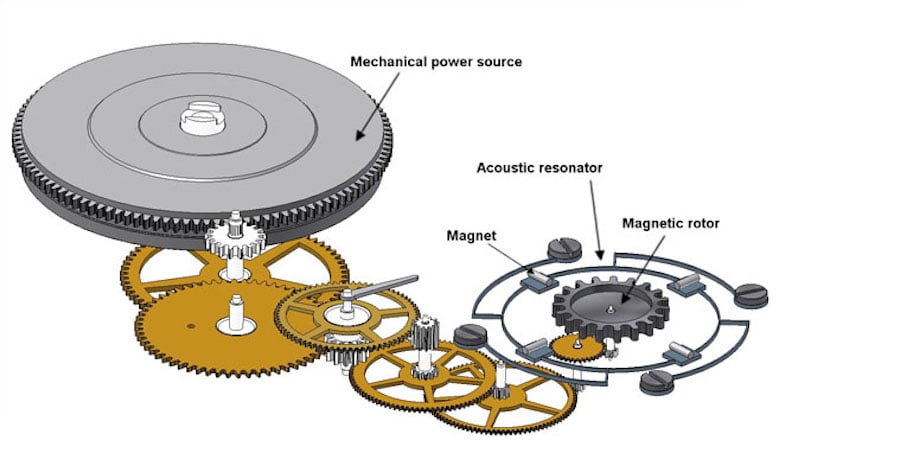
De Bethune Resonique escapement
Discrete or continuous time?
What if the manufactures changed their field of research to actually eliminating the escapement? The stop and go motion of this complex mechanism wastes a huge amount of energy, which explains the low efficiency of escapements. This is the path followed with Isospring, the name of a new oscillator, presented at the SSC (Société Suisse de Chronométrie) by a group of researchers from EPFL (Ecole Polytechnique Fédérale de Lausanne) lead by Professor Simon Heinen.
Inspired by the principles theory’s discovered by Sir Isaac Newton, the experimental concept is based on the elastic properties of matter to use a unidirectional, continuous oscillator with a constant time period. Speaking about the mechanisms with flexible guides to control the energy use, the EPFL team uses the metaphor of ‘an ancient sling in which you use a leather strap to make a stone turn in a circle. If you replace the strap with an elastic band, the stone will now move in an ellipse and its speed will no longer stay constant; on the other hand, its period will now become constant so it can be used to precisely measure time’. The next steps for the EPFL team will be to reduce the size of the first prototype to make this Copernican shift in a way to measure time and make it wearable.

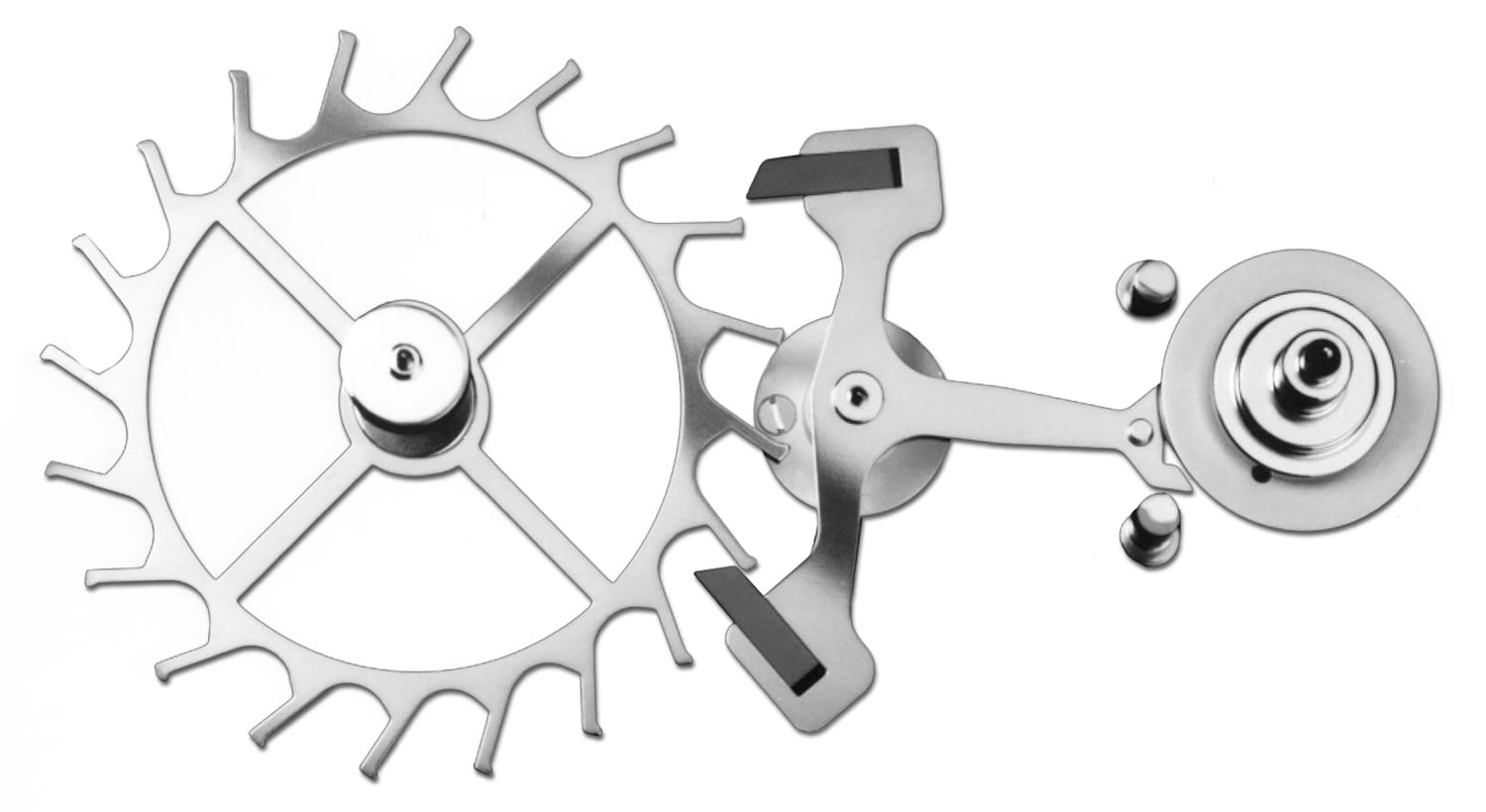
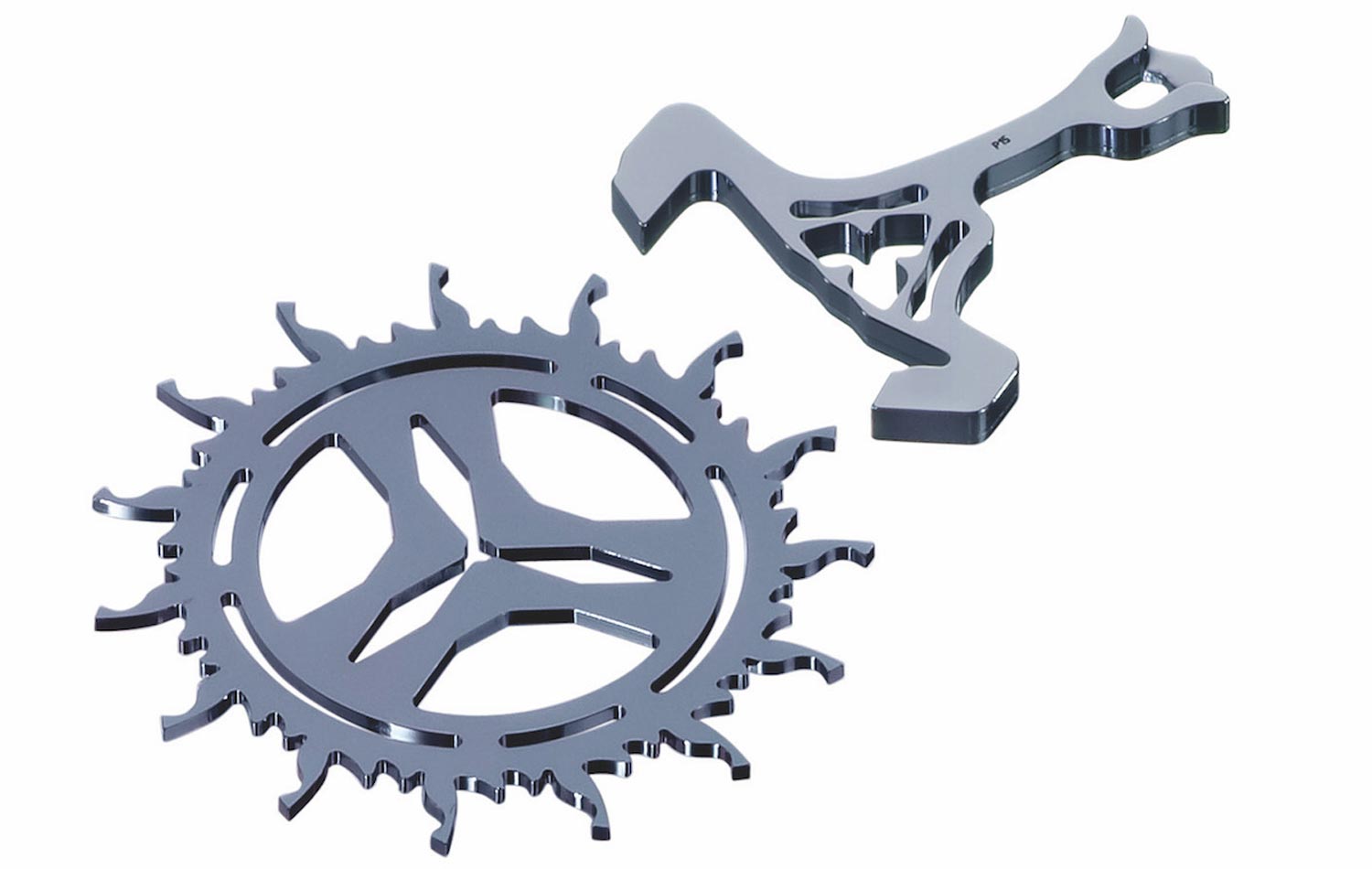

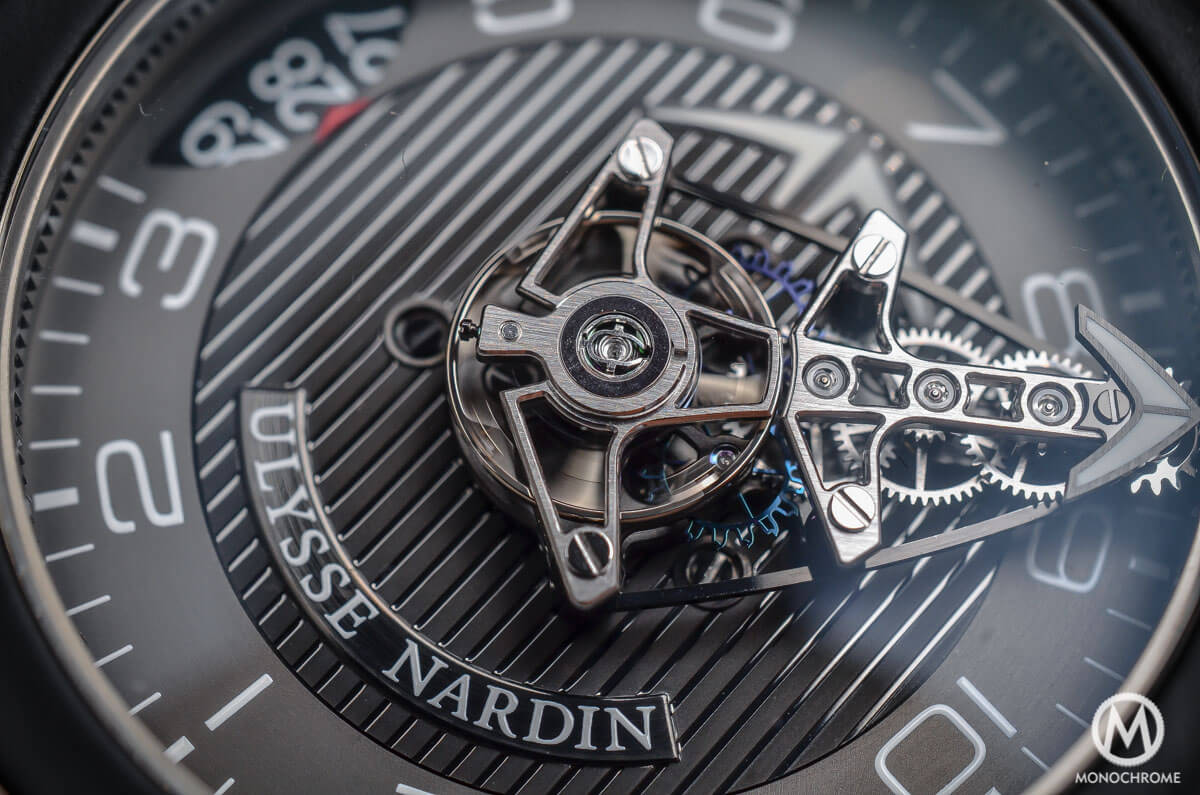
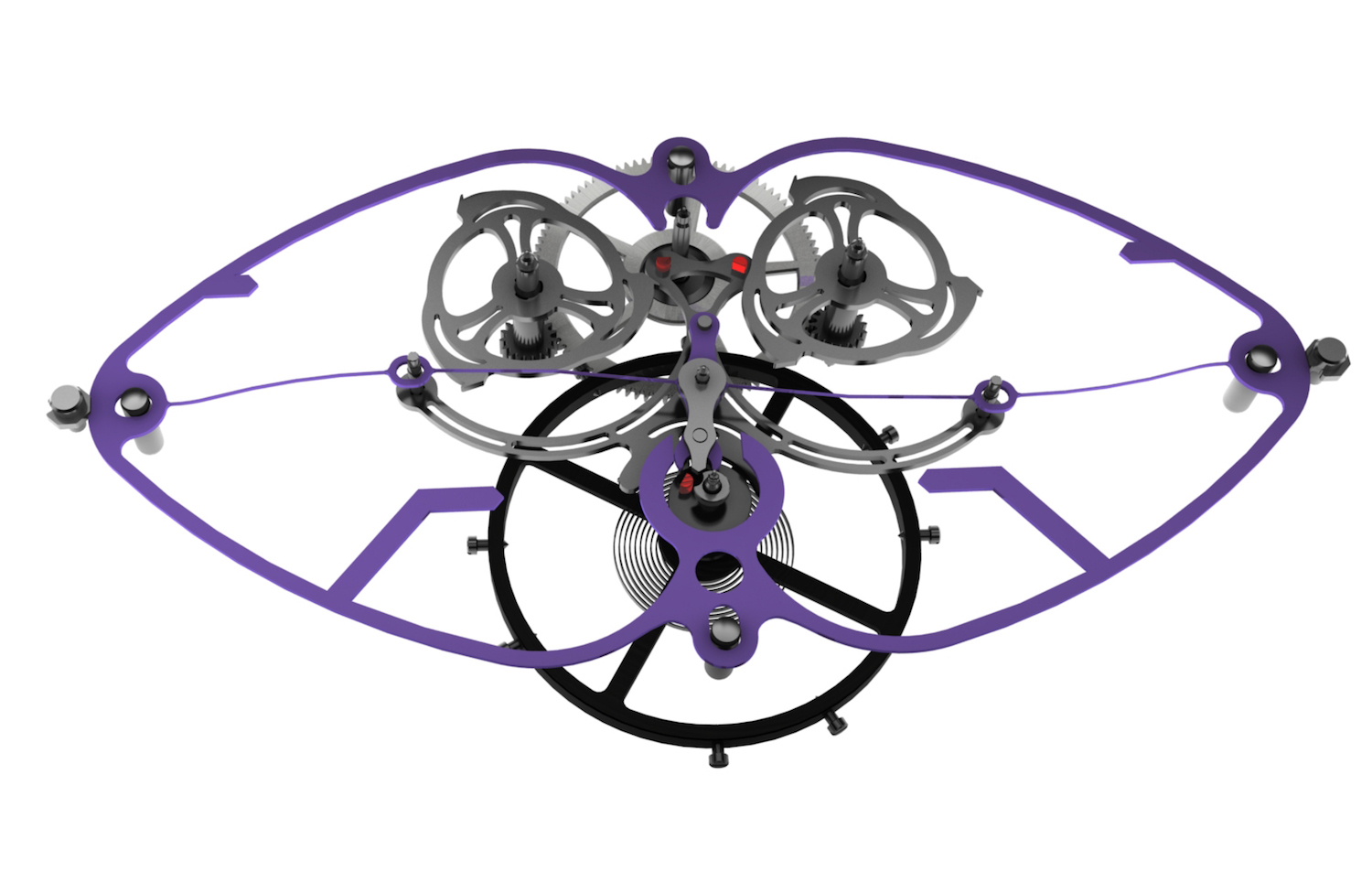
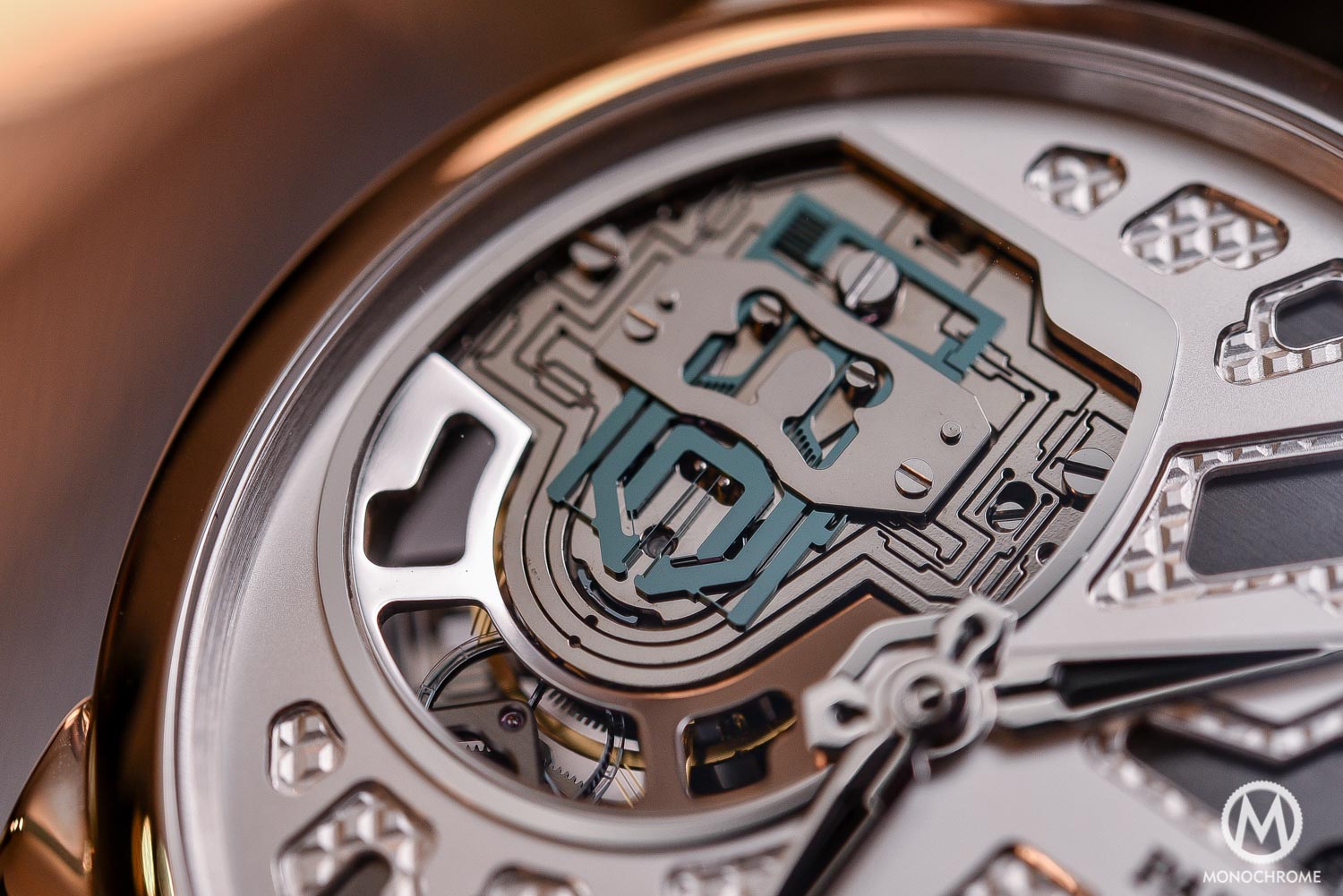
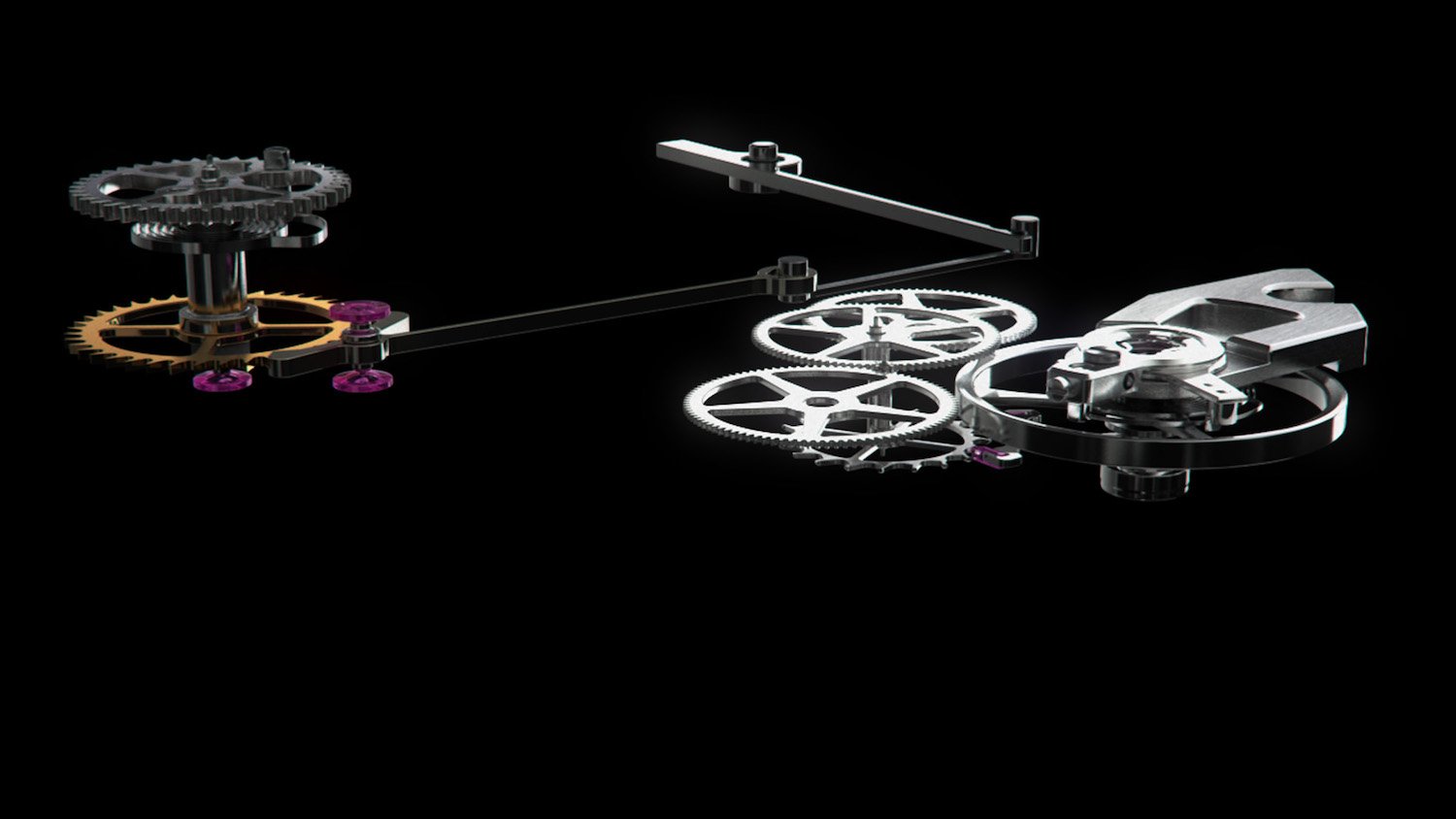



8 responses
Hi and thanks for this extremely interesting article – a complex matter easily explained.
Only question is about the Spring Drive technology, which was not covered…CAn we consider it as an alternative escapement too ?
Best regards,
Slide68
Excellent article but it needs more explanation of the detail along with slow time videos. Give us more.
Really a very interesting article. i had heard of the Omega system but not the others.
thank you.
Good overview, more similiar articles please, thank you.
Great article-surprised Vacheron was not mentioned as they are the first timepiece makers.
Thank you Andrea for you comment. The Seiko Spring Drive technology is indeed a sort of escapement, but not a mechanical escapement. We’re here focussing on mechanical types of escapements. The Sring Drive is a mechanical watch with a digital heart beating, an hybrid technology. It is a very interesting, innovative and precise technology for sure, but not the kind of solution we wanted to focus on.
Hi Brice, thanks a lot for you kind response !
Looking forward to more articles like this one.
Regards,
A.
Hey, I tell you what. How about an escapement based on the vibrations of a piece of precisely cut crystal? We can make that vibrate 32, 768 times a second! Going to be an even more precise escapement………….
Darn- someone’s done that already 🙂